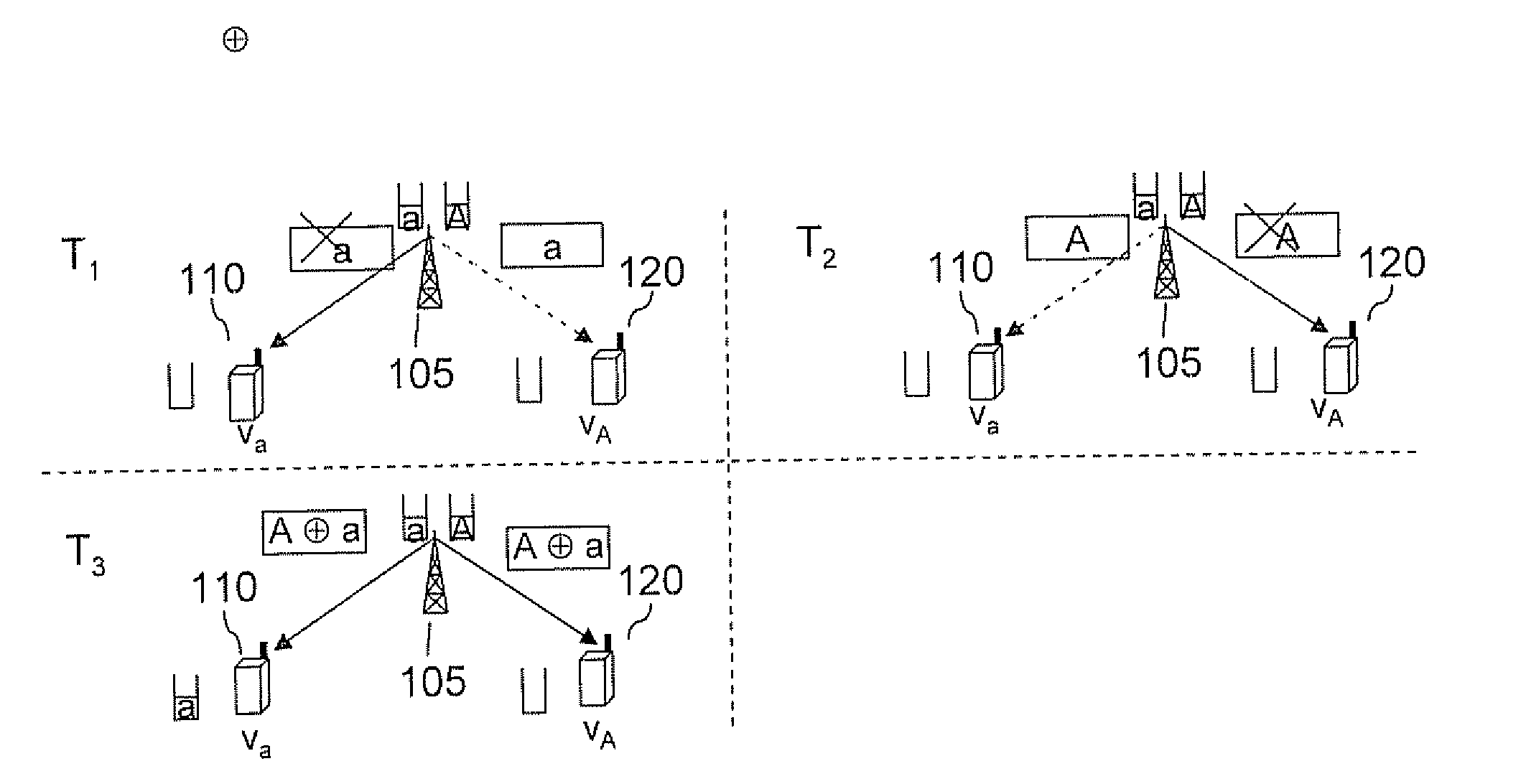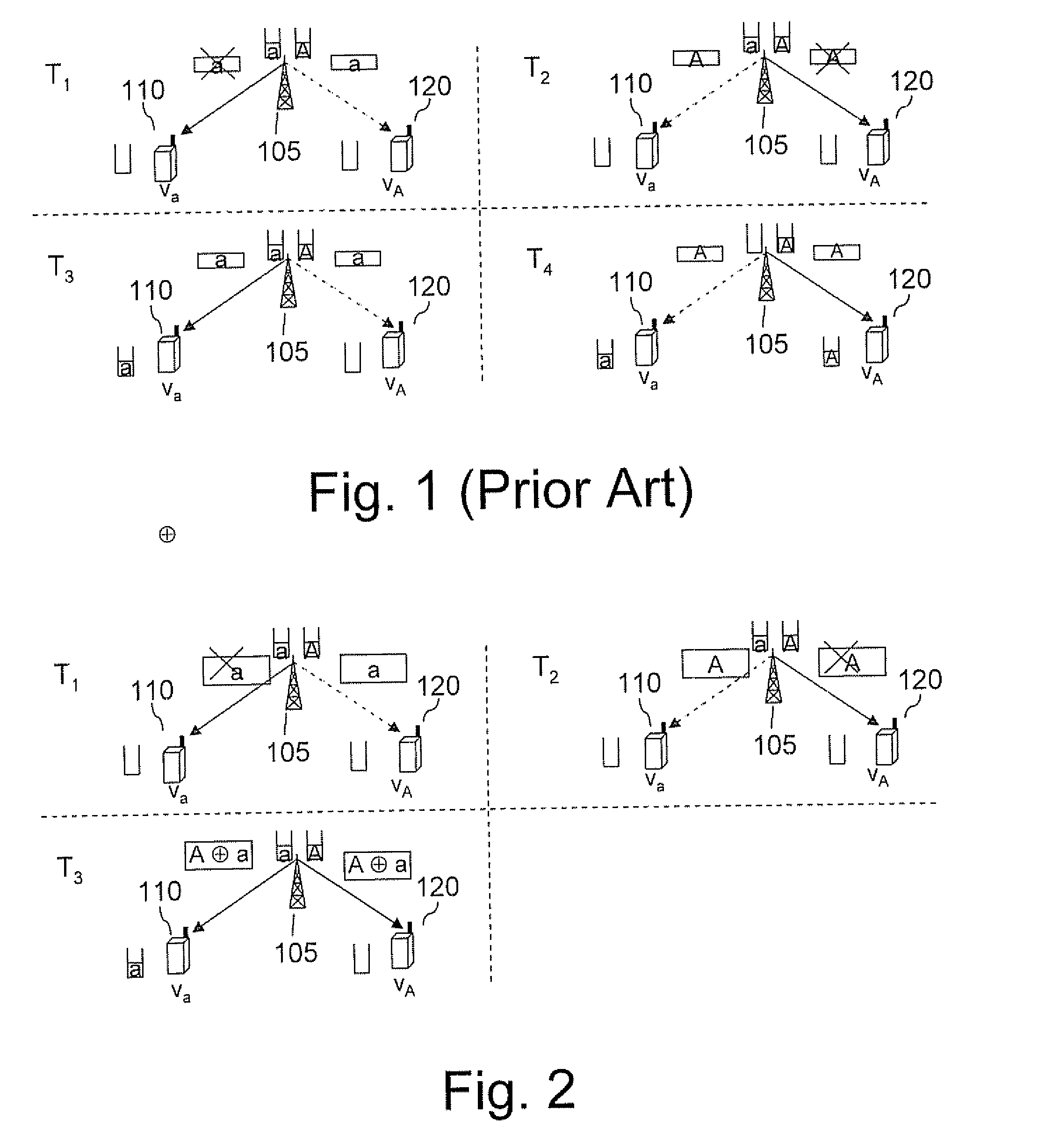Method and Arrangement for Coding and Scheduling in a Retransmission Communication System
a communication system and coding technology, applied in the field of communication systems, can solve the problems that packets may not be received by their intended recipients, and achieve the effect of improving the creation of composite packets even
- Summary
- Abstract
- Description
- Claims
- Application Information
AI Technical Summary
Benefits of technology
Problems solved by technology
Method used
Image
Examples
Embodiment Construction
[0071]In the communication system according to the present invention, a sending entity is engaged in communication with multiple receiving entities. The sending entity, for example a base station (BS) in transmitting operation is referred to as a sending node (SN) and the receiving entity, for example realised as a mobile station (MS), in receiving operation is referred to as the receiving node (RN). It should be noted that a mobile station could also act as a sending node, and a base station as a receiving node. The present invention may advantageously be utilized both in typical cellular systems with a base station in communication with a plurality of mobile stations and in ad hoc systems, wherein at least one mobile station communicates with at least two other mobile stations to enable communication. As previously described, various scheduling schemes may be utilized in such systems to enhance performance and different types of ARQ-schemes may be used to increase the reliability ...
PUM
 Login to View More
Login to View More Abstract
Description
Claims
Application Information
 Login to View More
Login to View More - R&D
- Intellectual Property
- Life Sciences
- Materials
- Tech Scout
- Unparalleled Data Quality
- Higher Quality Content
- 60% Fewer Hallucinations
Browse by: Latest US Patents, China's latest patents, Technical Efficacy Thesaurus, Application Domain, Technology Topic, Popular Technical Reports.
© 2025 PatSnap. All rights reserved.Legal|Privacy policy|Modern Slavery Act Transparency Statement|Sitemap|About US| Contact US: help@patsnap.com



